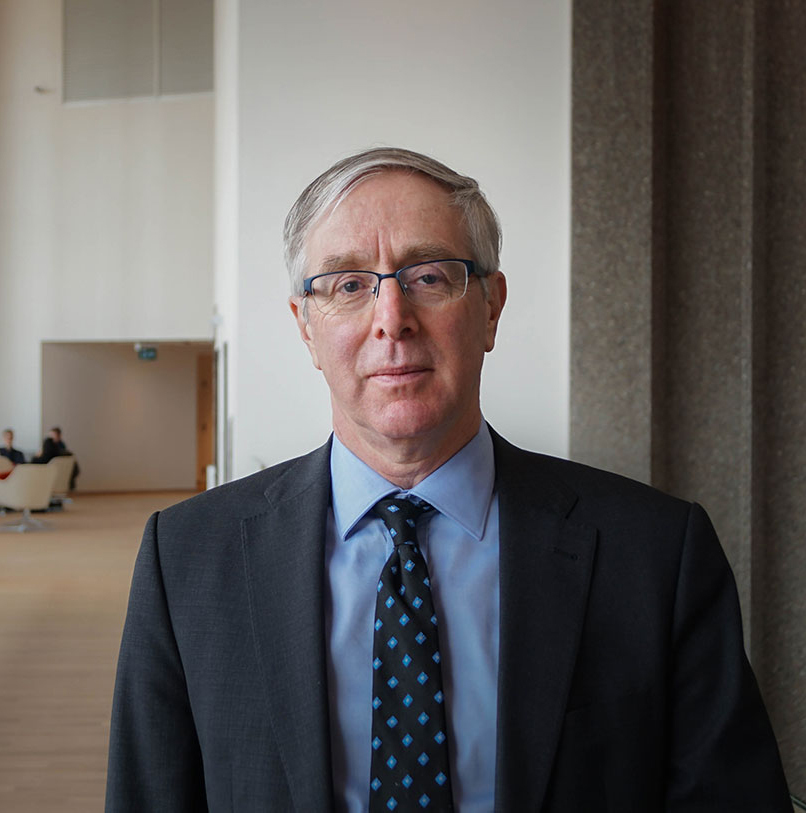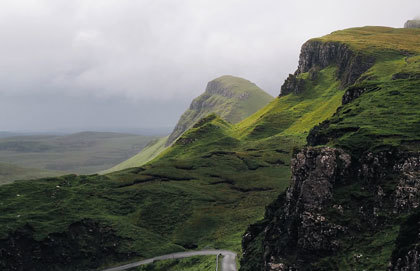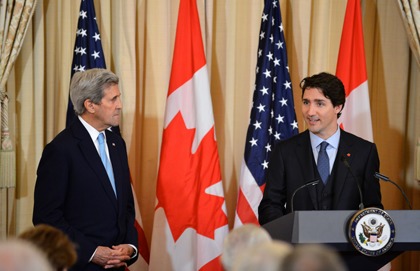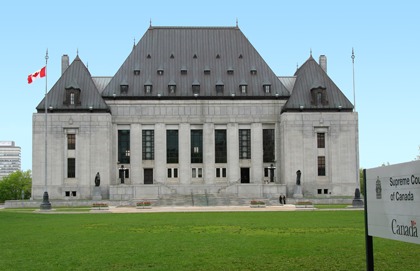This is part two of Convivium’s series on Northern Ireland and its history as it exists today. Click here to read part one: “A Beacon of Hope and Warning.”
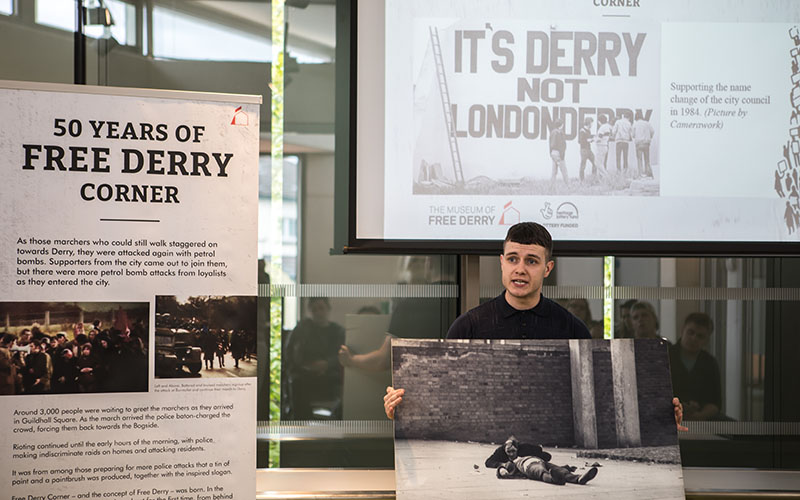 Photo by Peter Stockland
Photo by Peter Stockland
Rossa Ó Dochartaigh produces, from behind the podium where he’s speaking in the Free Derry Museum, a large mounted photograph of his grandfather.
In the photograph, the grandfather is still a youngish man of 35. His picture shows him prostrate, either dying or already dead, on a street in the Bogside neighbourhood of Derry, Northern Ireland. Another man is lying with him, also youngish, also dead or dying.
“They were shot by British soldiers about 25 yards from here,” Rossa Ó Dochartaigh tells those of us at the museum listening to his testimonial. “My grandfather’s name was Paddy. The other man was named Paddy, too. I guess we’re not very imaginative with names around here. They both ended up being shot to death anyway.”
The last sentence is delivered with the ballistic force of a young man aiming not just at the immediate target of family tragedy, but at the whole of Irish history itself, or what he knows of it with certainty, anyway.
And he knows several things about it without fail.
Number one is that on Bloody Sunday, Jan. 30, 1972, two men named Paddy were among 13 Bogside residents cut down in the streets of their own impoverished Catholic community because British soldiers lost control during a protest march and opened fire indiscriminately.
Number two is that it took 38 years for the government of the United Kingdom to acknowledge, in the words of then Prime Minister David Cameron, that the killings were “unjustified and unjustifiable.” Even within the contextual brutality of Northern Ireland’s hyper-violent 30-year Troubles, the Bloody Sunday was a criminal military massacre.
Number three is that the initial inquiry into the deaths of two Paddys and 11 others produced a mere 37-page report ludicrous in the overtness of its fabrications.
“Total lies,” Ó Dochartaigh spits.
And number four?
“Bloody Sunday was the best thing that ever happened to the IRA,” he says.
The recruitment efforts of the IRA exploded, so to speak, after Bloody Sunday. Without it, Ó Dochartaigh says, what is now acknowledged as a full-blown civil war would probably have “fizzled out by 1980.” Instead, it piled up a body count of 3,600 people until a form of peace mercifully returned with acceptance of the Good Friday Agreement of 1998. In the kind of counter-factual some historians love, it might even have meant Ó Dochartaigh being able to know his grandfather as more than a photographic image of man named Paddy dying in the street.
Given the chronology, of course, he never did. Beyond the familial and personal effects of that, it means his understanding is formed by the convection of inquiry, saga, and the enduring politicization of memory. He is one of about 4.7 million Irish people, divided North and south into two partitioned states, whose daily lives are carried by those currents, whether or not they are as aware as Ó Dochartaigh is of their historic sources and significance.
Arguably, the same can be broadly said for the rest of the planet’s 7.5-plus billion people.
But Ireland’s geographical and historical accidents make the effects more intense, more concentrated, and in many ways simultaneously more discernible and elusive than anywhere on earth. Or certainly in what we are still permitted, I think, to cautiously call the West.
In the Greek and Roman epochs, Ireland was a distant northern ocean outlier, though that did not prevent its island culture from spawning sailors apparently capable of forging trade links in the Levant and North Africa. (The skull of a Barbary monkey has been found in a prehistoric Irish burial ground). In medieval times, Irish peregrini monks re-evangelized Europe and might have even reached Newfoundland (come home, St. Brendan the Explorer, all is forgiven). It was a portent of the massive Irish diaspora, stretched over half a millennium that would create the phenomenon of generation upon generation, from Australia to Albuquerque, proudly announcing: “You know, my great-grandmother was Irish….”
Because of that vast diaspora, and because of the conditions that compelled that diaspora, Ireland is, in ways that count most deeply, us. Not just us in claiming pride of place on the family tree. Us as sharing Stephen Dedalus’ sense in James Joyce’s Ulysses that: “History is a nightmare from which I cannot awake.”
Whether we never think of Ireland from year to year, whether we know nothing about it at all, its accidental history makes all of us shades, however minor and fleeing, in that dreamscape. Ireland was, after all, England’s first colony, passed like a flask of something strange and potent, from the Normans to the Tudors as the world made its irrevocable last turn away from the Mediterranean and toward the Atlantic.
Ireland became the baseline experiment in colonialism for fresh-faced British imperialists to test what worked and what did not work with local populations. And to reliably choose what did not work because, damn it all, they were the English, don’t you know?
The rest, as they say, is history. It haunts us still, though in fairness, and contrary to our current post-post-colonial zeitgeist, colonialism did produce at least some qualified goods, genetically encoded Canadian deference and politeness being only one of them.
It produced even more such glorious testaments to human achievement as the Great Irish Famine of 1845 to 1850 when an estimated 1.1 million Irish starved to death indisputably as a result of British imperial policy. Another million famished souls were forced to flee the island to try to recover their lives in the diaspora.
An estimated 6,000 of those trying to do so were dumped in a mass grave in Montreal after they arrived in so-called “coffin ships” in 1847 and died soon after of typhus. A local highway now carries Montrealer commuters over their body parts. To paraphrase Joyce’s Stephen Dedalus, history is a nightmare in which hordes of self-obsessed zombies have escaped.
Much more than the buried shinbones, kneecaps and thighbones of the unfortunate Irish dead, cast aside like so much overripe Irish beef, connects us to them.
Canada, nobly over-obsequious as always, responded to a British request to do something about the deplorable conditions of the coffin ships by refusing to accept any more Irish immigrants at all during the famine.
Well played, Canada: keep the true north strong and free by driving primarily more poor Catholics into the Irish tenement slums of New York and Boston and, ultimately, into the ranks of the Fenian revolutionary movement. They, in turn, would assassinate our own father of Confederation, Thomas d’Arcy McGee and, far more importantly from the broad historical perspective, primarily fund the so-called physical force nationalists of early 20th century Ireland who were fervent in believing only blood-stained violence could drive the British from Irish shores.
Those physical force nationalists got it, at best, partially right. Like guests who invite themselves to breakfast long after the party from the night before has ended, the British did finally take the hint and leave. Not, alas, before taking the northeast portion of Ireland with them and proclaiming its six counties would remain part of the United Kingdom until further notice. A war between Ireland and Britain, a civil war in southern Ireland caused by British partitioning of the island, and border violence in the 1950s failed to clue them in that notice was being served.
Fast forward with a bullet to a bloody Sunday in 1972, and two men named Paddy being shot in the streets of Derry, Northern Ireland, because British soldiers present to ensure peace lost control and opened fire. Fast forward another 47 years to young Rossa Ó Dochartaigh standing in a museum holding up a large mounted photograph of the grandfather he never knew lying in the street dying or already dead.
It’s not the end of the story, of course. On the island of Ireland, north and south, and in the vast Irish diaspora, the story can no more end than it can be escaped. History is an endless dream in which alarm clocks start ringing and can’t be shut off.
At the moment, the narrative is one of tenuous, tested though increasingly confident… Well… if not peace then a vivid absence of ignorant paramilitaries clashing violently by night.
In the centre of Belfast, the city council and local merchants are waging a fierce marketing campaign with lamppost bunting declaring “Different Days” in the once-violence-plagued metropolis. In the vox populi-vox dei category of evidence, a couple I fell into conversation with near Victoria Square affirmed the days are, indeed, different.
Asked what Northern Ireland should do in response to the tectonic economic tremors being caused by Britain’s looming departure from the European Union, the husband said, “Just leave things alone. It’s working. We’re coming back. We’re not all the way there, but we’re getting there. Don’t do anything to mess it up.”
The wife took a more concretely grounded comparative view: “Thirty years ago, we couldn’t have stood where we’re standing now on a Saturday afternoon. We’d be too afraid of a bomb going off. That building over there had a bar in it then, where a bomb went off on an afternoon just like this. Things are getting better. I’m Jewish, and when I was at school I had to choose between being on the Catholic table tennis team or the Protestant table tennis team. Things are getting better.”
One of the ways they’re getting better is by insisting they are. On Friday this week, for example, many of Northern Ireland’s Protestants, unionists, and loyalists (those who insist the six counties must remain part of the United Kingdom) will hold festivities to mark the 1690 Battle of the Boyne. They will march in parades, beat large drums, and in the evenings build huge bonfires to commemorate Protestant King William of Orange’s victory over Catholic King James II 329 years ago.
For decades, the “marching season” as it’s called, has been considered the worst sort of provocative triumphalism, a deliberate violence-seeking rubbing of Catholic noses in the history of failure. Indeed, it’s the insistence on such “marching” through the streets of Derry that is blamed for contributing significantly to the tinder-tempered conditions for violence on Bloody Sunday in 1972 and beyond.
While the parades will go on as usual this year, they will do so under the anodyne marketing brand known as “Orangefest,” which takes more than three centuries of bloody martial strife and makes it sound like a United States college football game or a reunion of 1970s singer-song writers somewhere in southern California.
In Belfast’s main Donegal Square, there’s a massive, festival banner hung above the street calling for everyone to come out an enjoy themselves peacefully in joint civic jubilation at what used to stand for Catholic humiliation. Bus billboards carry the reminder that “It’s the Battle, Not the Bottle” – a slogan essentially meaning it’s all right to celebrate military one-upmanship, but not to behave like a drunken lout. History is a hangover that isn’t really too bad to wake up with the next day.
When the alternative to the Donegal Place banner is Rossa Ó Dochartaigh’s grandfather’s photograph, it’s hard to argue that isn’t true.
This is part two of Convivium’s series on Northern Ireland and its history as it exists today. Click here to read part three: "The Vocabulary of Who We Are."
Convivium means living together. We welcome your voice to the conversation. Do you know someone who would enjoy this article? Send it to them now. Do you have a response to something we've published? Let us know!
 Photo by Peter Stockland
Photo by Peter Stockland


